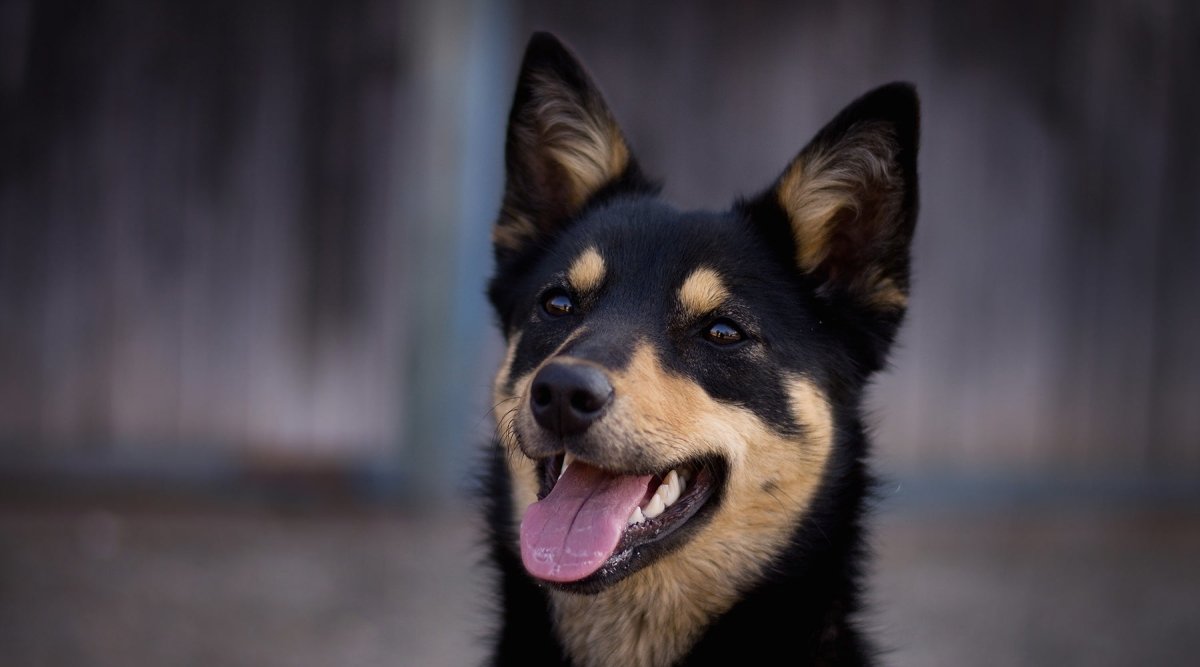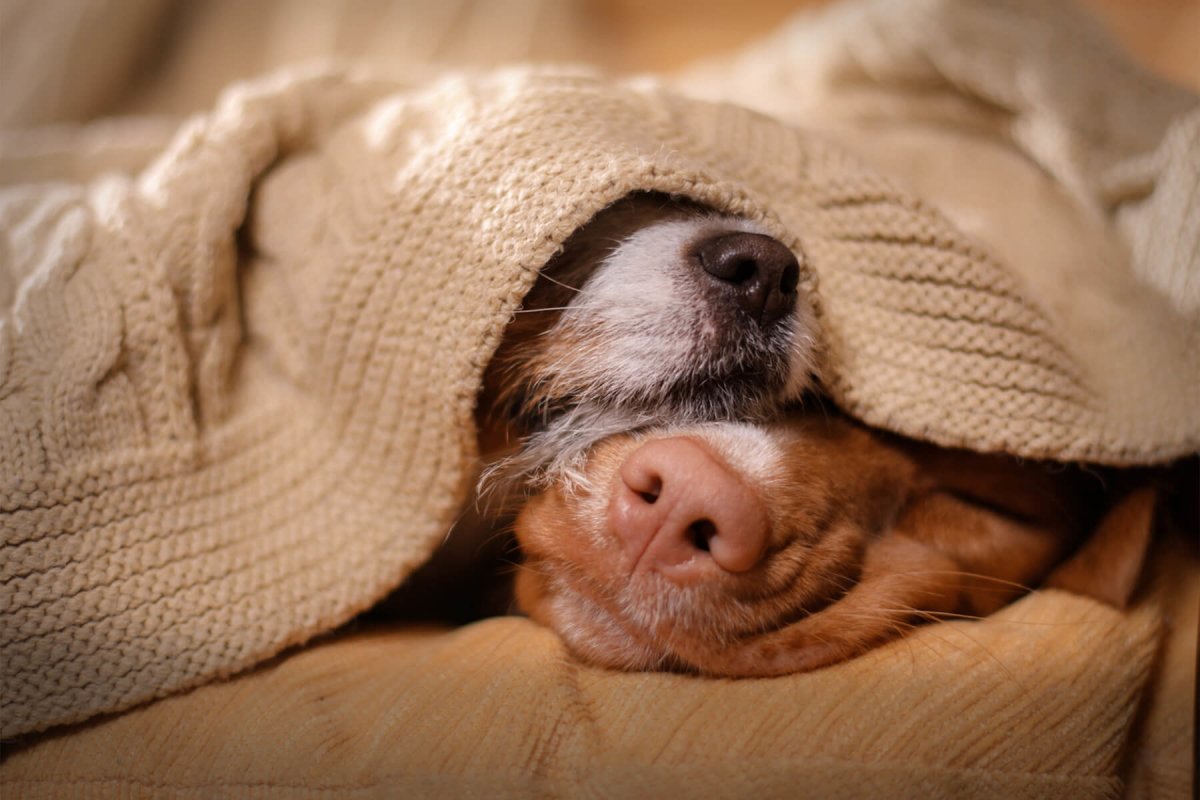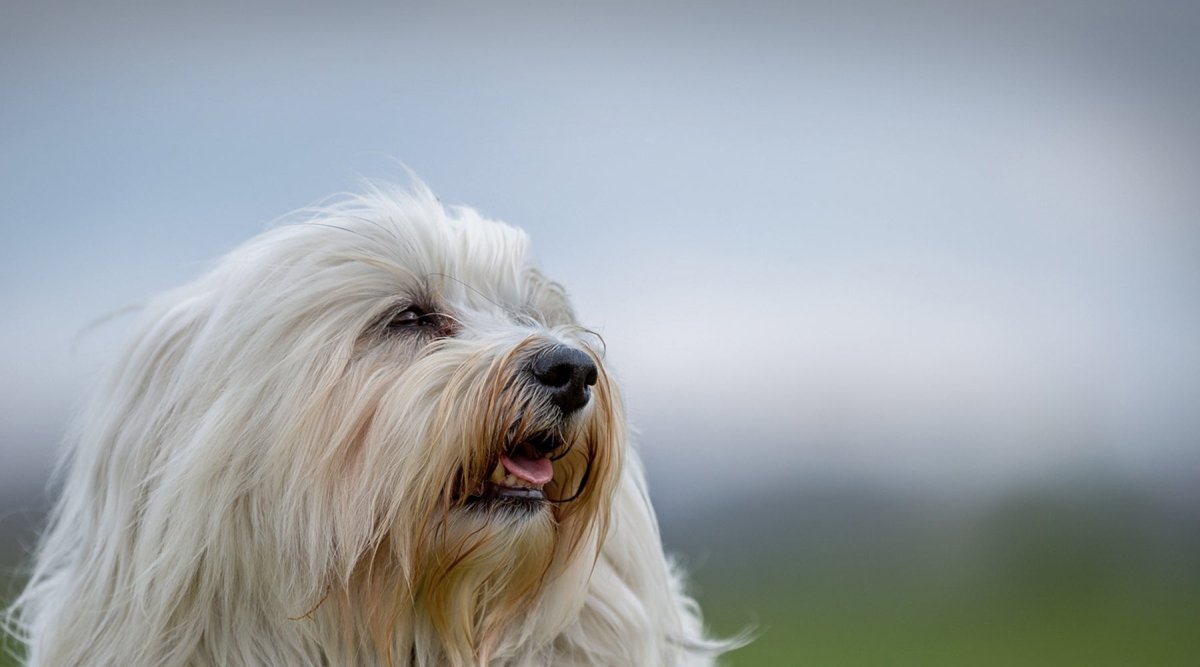Are you looking for a sporty and agile companion that is also easy to care for and loyal? Then you've come to the right place with the Australian Kelpie. Although this Australian dog breed is not quite as common in this country as the country's favorites, the German Shepherd, Goldie and Labbi, this exotic breed has a lot to offer. Find out more about the sheep-loving Australian Kelpie and whether this dog breed is right for you in our breed portrait.
What does the Kelpie look like?
The Kelpie is a dog with a very dense top coat, the top coat is short, as is the undercoat. The coat is slightly longer on the neck, so that it looks as if the Kelpie is wearing a kind of fur collar. You can find the Kelpie in many color combinations: Black, white, brown, tan or tan are the most common color combinations, but the rare smoky blue coat color is particularly unusual.
The Kelpie has a muscular and streamlined body, enabling it to pick up very high speeds and make sudden changes of direction with ease. As a rule, dogs of this breed are between 43 - 50 cm tall, have a pointed nose and upright ears. The tail is bushy and lifts when the dog is active or excited. Otherwise it rests in a slightly drooping position.
The Kelpie has an attentive eye, because as the guardian of thousands of sheep, nothing must escape his notice.
Origin of the breed - Australian Kelpie vs. Working Kelpie
The Kelpie, which resembles the sheepdog, originates from Australia and is mainly used there for herding work. The dog breed originates from a cross between the English-Scottish breed of "Working Collies" and was created around 1870. Early on, the dogs took part in Australian competitions and won numerous awards. Twenty years later, the robust working dogs were widespread throughout Australia.
As they were bred very closely in the beginning, the breed contains hardly any outcrossing. However, if it did happen that the breeding was mixed, the breed returned to its basic lineage.
There are now two strands to this breed: the Working Kelpie and the Australian Kelpie. While the Working Kelpie is bred specifically for high working performance, the Australian Kelpie is more at home in active dog sports. The breeding of the Australian Kelpie is regulated and monitored by the FCI, while the Working Kelpie line is controlled by The Working Kelpie Council of Australia. Because the characteristics of the Working Kelpie have been strictly maintained, the Kelpie is one of the few breeds whose origins can be traced back to the first population in the 1870s.
The main task of the Working Kelpie is to herd large flocks of sheep in the Australian wilderness. The herds were often as large as 10,000 sheep. This work would have had to be done by several men at the same time. The Kelpie was a great help because of its nature. It was specially bred for the harsh Australian conditions: Heat, inaccessible areas, sandstorms and huge distances were its daily work area. Even today, the Kelpie is still one of the most common herding dogs in Australia.
Kelpie character - traits and training of the herding dog
The Kelpie is a working dog through and through. Herding and herding is in his genes and is also his great passion. It is even rumored that without this work, the four-legged friend becomes depressed and loses its zest for life.
Although these tendencies are no longer as pronounced in the Australian Kelpie, both strands of this dog breed still need to be kept very busy.
The Kelpie is a very independent dog, it needs a lot of exercise and can cope with problems without help. Both physical and mental work is extremely important for these dogs and they need to be exercised regularly. With a gentle and clear hand, the Kelpie becomes a loyal and sensitive companion.
Character traits:
- attentive
- eager
- very intelligent
- obedient and loyal
- energetic
- talented as a herding dog
- very eager to learn
Is the Australian Kelpie right for me?
While the Working Kelpie belongs as a working animal on a farm, where it can pursue its passion for herding sheep, the Australian Kelpie can also be kept as a pet dog. His urge to work is no longer as pronounced and the instinct of the herd leader has also diminished.
Nevertheless, the Kelpie needs a lot of attention, time and intensive training. The energy pack loves free exercise and long, enduring walks. This dog breed finds regular jogging laps with sprinting even more exciting. However, sufficient exercise is not enough for the four-legged friend's muscular body. Its pronounced intelligence, love of learning and creativity also need to be encouraged. Mental stimulation is simply part of keeping a Kelpie.
If the owner meets the needs of this dog breed, the Australian Kelpie will return the favor with loyalty, cuddling and a lot of gentleness. The Australian Kelpie builds up an intensive relationship with its favorite people and likes to be led and guided by them.
This dog breed is particularly keen to bark due to its herding and herding instincts. So don't be alarmed if the greeting is sometimes a little louder.
Typical breed diseases of Australian Shepherd Dogs
As a rule, Kelpies are robust and healthy dog breeds. Few diseases occur in breeding that are hereditary. Typical dog diseases such as hip joint and elbow dysplasia, as well as susceptibility to eye diseases such as Progressive Retinal Abiotrophy (PRA) are rare in this breed.
However, Kelpies can carry genes for cerebellar abiotrophy (CA). This is an incurable disease that causes symptoms such as ataxia, movement disorders, impaired coordination, tremors, nodding head and problems with eating, drinking and jumping. The special Kelpie forms of this disease only occur in this breed and in crosses with Border Collies or Koolies. According to current scientific knowledge, this disease is incurable and is caused by a genetic defect that only occurs in this breed.
Care and nutrition
The Australian Kelpie is an easy-care dog. Its hard coat protects it from different weather conditions and is water and dirt repellent due to its density. If your four-legged friend has had a bit too much fun in the mud, the coat can be cleaned again with a plant-based shampoo for dogs. To keep your kelpie's coat and skin fit and vital, coconut oil for dogs can be added to their daily food. This also strengthens the immune system and has a positive effect on the metabolism of the agile four-legged friend.
As Kelpies like to spend time in the great outdoors, you should make sure they have active parasite protection. Tick repellents for dogs, flea repellents for dogs and mite sprays for dogs are simply part of Kelpie prevention and keep annoying pests away from your dog.
Regular vaccinations and worming should also be considered for Kelpies of both breeds in the same way as for other dogs.
Kelpie nutrition is also unproblematic. The breed is not prone to intolerances or allergies. However, the bundle of energy needs a diet that is adapted to its urge to move so that no deficiency symptoms develop and the four-legged friend becomes ill. Your Kelpie should therefore be fed a very balanced diet. A natural dog food with a high protein content can meet the needs of this agile four-legged friend and provide it with important nutrients.
Conclusion
The Australian Kelpie is not a dog that you can turn into a couch potato. It has been bred for hard work and persistent sheep herding and driving. These breed-specific characteristics are much more pronounced in the Working Kelpie than in the Australian Kelpie. However, both still have in common that they need a lot of exercise, time and attention. On the other hand, grooming the dog takes very little time. This is because the dog breed is easy to groom and the dense, short coat is naturally very resistant and dirt-repellent.
With the Australian Kelpie, you are definitely getting a loyal but very intelligent companion in your home.



